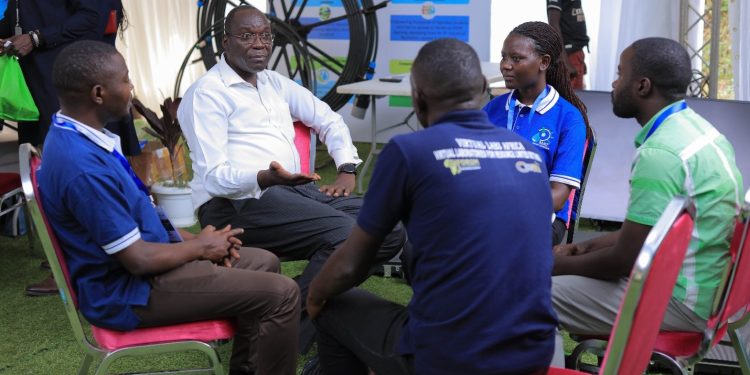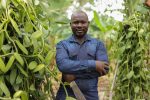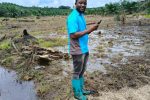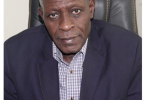Gender Inclusion and Safeguarding: Building Inclusive Universities for Inclusive Societies

By: Evaline Acan
Across the globe, gender inclusion and safeguarding have become central to development agendas, with institutions of higher learning being recognized as critical agents of transformation. International frameworks such as the Sustainable Development Goals (SDGs), particularly Goal 5 on Gender Equality, Africa’s Agenda 2063 and the Continental Education Strategy emphasize that societies cannot achieve sustainable development without the full participation and protection of all genders (United Nations, 2015). Although the United Nations Sustainable Development Goals (SDGs) underscore the importance of inclusive and equitable education (SDG 4) and gender equality (SDG 5) as cornerstones of sustainable development, barriers still remain. For Instance, women are still underrepresented in STEM fields and research; refugees face systemic exclusion from educational systems; and persons with disabilities encounter structural and attitudinal challenges that restrict access to opportunities while safeguarding systems remain limited in most African universities. These challenges are even more pronounced in Africa, where higher education institutions play a critical role in shaping the continent’s human capital and innovation landscape.
According to the CGIAR, women are indispensable to global agriculture. They contribute significantly to food production, processing, distribution, and household nutrition. In many developing regions, women comprise a large share of the agricultural labor force of up to 50% in Eastern and Southeastern Asia and Sub-Saharan Africa and often work as unpaid family laborers. Women are central actors in Africa’s agri-food system transformation, contributing at every stage of the value chain from primary production and processing to distribution, marketing, and consumption. They serve as farmers, researchers, innovators, entrepreneurs, policymakers, and educators, making them central to achieving food security and agricultural modernization.
In Africa, efforts to promote gender inclusion are increasingly visible within governments, universities, and regional networks such as the Regional Universities Forum for Capacity Building in Agriculture (RUFORUM) and the Mastercard Foundation among others. RUFORUM in partnership with the Mastercard Foundation, convened a webinar on the 21st August 2025, under the Transforming African Agricultural Universities to Meaningfully Contribute to Africa’s Growth and Development (TAGDev 2.0) program. The webinar sought to converge perspectives on Gender, Inclusion, and Safeguarding (GIS), to equip universities to foster more equitable access to higher agricultural education. It also set ambitious targets of 70% young women, 25% refugees, and 10% persons with disabilities (PWDs) in higher education, reinforcing the vision of inclusive transformation in African academia. In her address, Dr. Aster Minwyelet Addamu, higher education programs lead at the Mastercard Foundation stated that the Mastercard Foundation recognizes the need for inclusion and as a result developed the Young Africa Works Strategy which aims to enable 30 million young people in Africa to transition to dignified and fulfilling work by 2030. TAGDev 2.0 is contributing to the achievement of this strategy.
Despite progress, there are significant barriers rooted in cultural norms, policy gaps, and implementation failures (African Union, 2021). According to the Economic Policy Research Center and FAO, gender disparities in agriculture are rooted in unequal access to vital resources such as land, credit, technology, inputs, extension services, and training. Women frequently face legal and cultural obstacles that limit land ownership and control. In Uganda, for example, female-headed households manage land plots that are 20–30% less productive and only around 31% of women in agricultural households hold land rights versus 49% of men.
Key insights on promising practices
Throughout the discussions, participants stressed that GIS should be viewed not merely as compliance but as a transformational agenda for African universities. A central highlight of the webinar was the presentation of the RUFORUM GIS Framework by Dr. Irine Akite. This framework emphasizes institutional transformation, strengthened safeguarding systems, and capacity building to ensure that universities serve as safe, inclusive, and equitable spaces. It provides a roadmap for embedding GIS principles into governance, teaching, research, and student engagement.
Best practices were shared across different institutions. Makerere University demonstrated the value of leadership commitment and student engagement in operationalizing safeguarding policies. Their comprehensive approach, which includes digital reporting platforms and student champion programs, illustrated how safeguarding can be embedded into institutional culture. Similarly, UMP6 University showcased how admissions policies, mentorship, and community engagement initiatives can expand women’s participation in STEM fields. These cases reinforced the importance of coupling policy design with practical implementation to create tangible impact.
The panel discussions also highlighted how inclusive strategies must address marginalized populations beyond gender. Universities that have conducted accessibility audits and created dedicated disability desks are paving the way for more equitable participation of persons with disabilities. Meanwhile, examples of refugee-focused initiatives underscored the importance of psychosocial support systems, scholarship opportunities, and collaborations with governments and civil society to ease integration into higher education.
The Role of Universities in Advancing Gender Inclusion and Safeguarding
Universities are uniquely positioned to champion inclusion and safeguarding as part of their teaching, research, and institutional cultures. Several reflections from the dialogue underscored this responsibility:
- Creating inclusive campuses for inclusive societies: “Inclusive campuses create inclusive societies,” one speaker remarked, stressing that universities must lead by example in fostering safe and welcoming environments for all.
- Integrating safeguarding in policy and practice: Beyond students, safeguarding frameworks should also protect staff, creating “safe spaces for all humans at the university.”
- Promoting accountability: Policy alone is insufficient; committed leadership at senior levels and strong monitoring and evaluation systems are essential for meaningful implementation and sustainability.
- Mainstreaming marginalized groups: Participants noted the importance of actively recruiting and supporting women, PWDs, and other underrepresented groups. “PWDs are not just standby people to be wished away—they have talent and intellect to be dramatically deployed”.
- Innovative approaches to access: Universities can adapt admission criteria, expand online and flexible learning options, and provide affirmative action measures to ensure fair participation of marginalized groups (UNESCO, 2022).
The webinar underscored that universities are uniquely positioned to institutionalize GIS as a foundation of Africa’s higher education reform. Their role extends beyond curriculum design and includes building ecosystems where, marginalized groups can thrive. Universities are therefore urged to strengthen their systems by adapting the best practices shared during the webinar in several ways.
First, they must scale up women’s participation in STEM and agriculture, not only through recruitment but also through mentorship, leadership pipelines, and research opportunities that empower women to lead innovation in food systems. Second, they should expand opportunities for refugees and displaced populations by creating tailored academic pathways, psychosocial support, and policies that recognize non-traditional educational experiences. Third, institutions must integrate accessibility into infrastructure and teaching systems, ensuring persons with disabilities are not only admitted but also supported to excel academically and professionally.
Furthermore, safeguarding must be institutionalized across physical and digital environments. Establishing confidential e-reporting systems, complaint-handling mechanisms, and student champion programs are practical measures universities can adopt. Importantly, the integration of GIS modules into leadership and professional development programs will build a generation of leaders who view inclusivity as essential to excellence.
The conversation underscored that gender inclusion and safeguarding require not just policy reforms but also a cultural shift—one that values diversity and equity as part of the DNA of institutions.
Ultimately, the success of these efforts lies in a collective commitment from individuals, institutions, governments, and society at large. By advancing inclusive education, universities and TVET institutions can play a transformative role in shaping a future where no one is left behind.
As RUFORUM finalizes its GIS Framework for launch at the upcoming Annual General Meeting (AGM), scheduled to take place from 1 – 5 December 2025 in Gaborone, Botswana, the expectation is that universities will not only provide feedback but also begin implementing at least one GIS initiative immediately. By collecting disaggregated data, strengthening monitoring and evaluation systems, and aligning with the 70–25–10 inclusion targets for women, refugees and PWDs, respectively, universities can track progress and remain accountable.
The webinar reinforced that achieving inclusive transformation in African higher education is both urgent and possible. By co-opting proven practices, leveraging the RUFORUM network, and committing resources to GIS, universities can unlock the full potential of Africa’s young population. In doing so, they will not only contribute to national and continental development goals but also position African academia as a global leader in inclusive, equitable, and safeguarded higher education.






